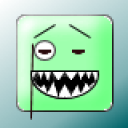2 Answers
A demonstrative pronoun stands on its own, replacing rather than modifying a noun:
This is good.
I like those.
There are five demonstrative pronouns in English: this, that, these, those,[8] and the less common yon or yonder (the latter is usually employed as a demonstrative determiner; even so it is rarely used in most dialects of English, although it persists in some dialects such as Southern American English.).[9] Author Bill Bryson laments the "losses along the way" of yon and yonder:
Today we have two demonstrative pronouns, this and that, but in Shakespeare's day there was a third, yon (as in the Milton line "Him that yon soars on golden wing"), which suggested a further distance than that. You could talk about this hat, that hat, and yon hat. Today the word survives as a colloquial adjective, yonder, but our speech is fractionally impoverished for its loss.
---Wikipedia
| 13 years ago. Rating: 0 | |

 loth
loth
 Bob/PKB
Bob/PKB




